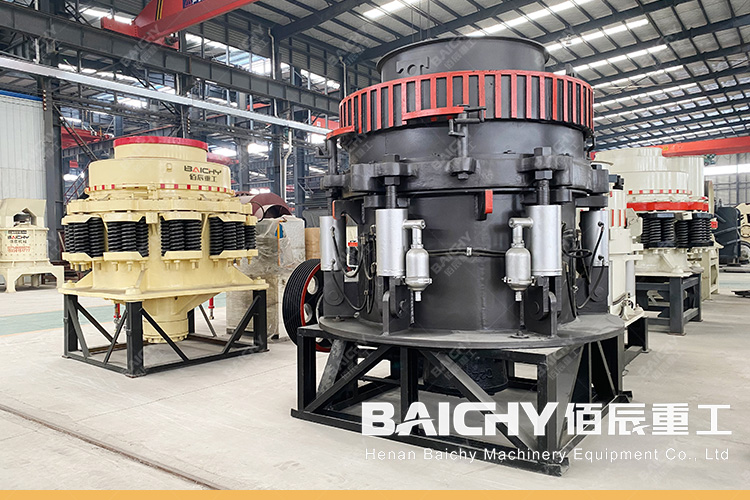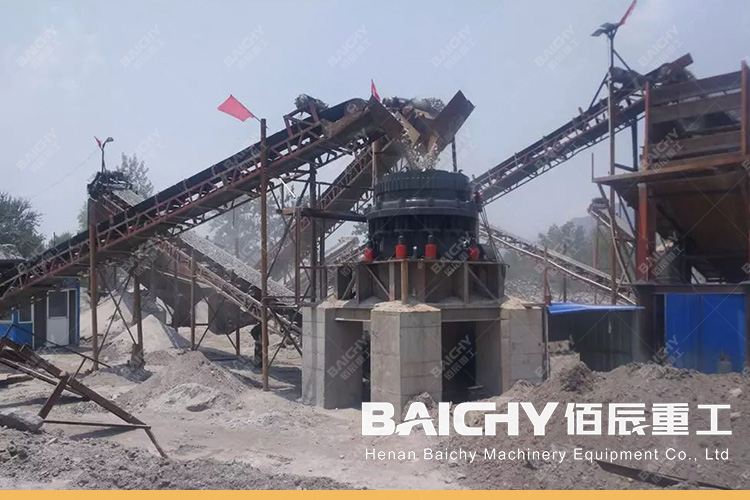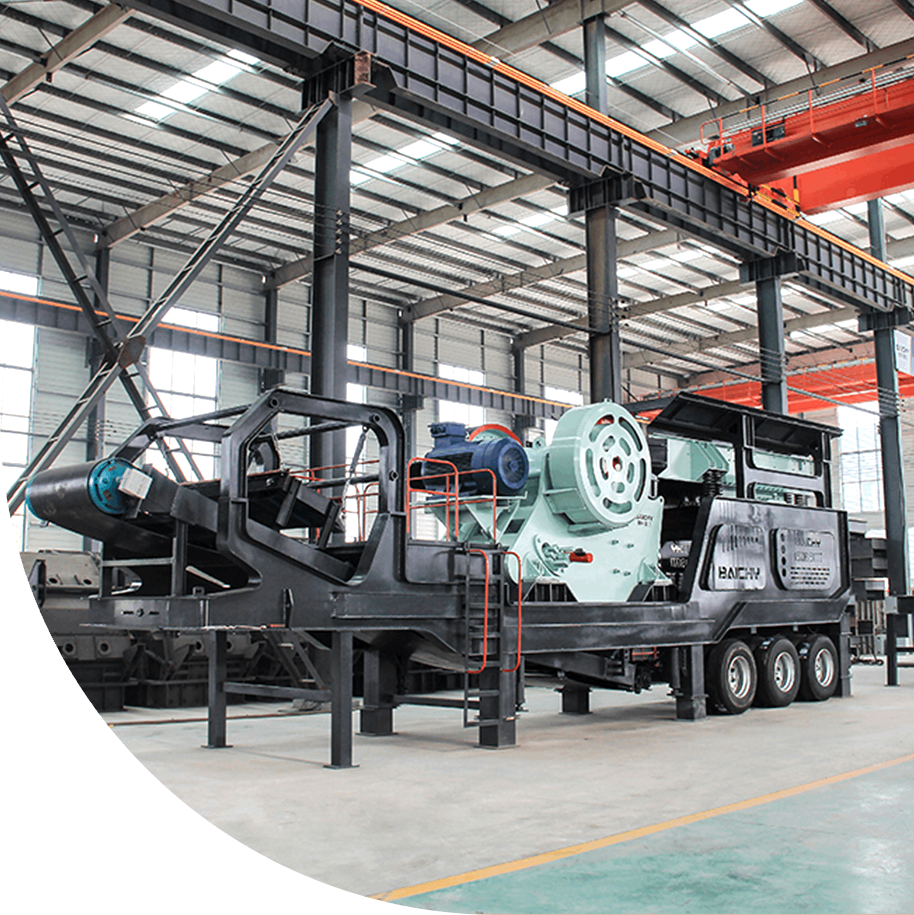
The technical parameters of hydraulic cone crushers vary between different models and manufacturers, but usually include the following aspects:
1. Crushing ratio: refers to the ratio of material particle size between the feed port and the discharge port of the crusher. It is an important parameter for the crushing capacity of the crusher. Hydraulic cone crushers usually have a larger crushing ratio and can meet the crushing needs of different materials.
2. Maximum feed size: refers to the maximum particle size of materials that the crusher can handle. The maximum feed size of hydraulic cone crushers varies from model to model, generally ranging from tens to hundreds of millimeters.
3. Adjustment range: refers to the adjustable range of the crusher discharge opening size. By adjusting the size of the discharge opening, the hydraulic cone crusher can control the particle size of the crushed materials to meet the needs of different customers.
4. Production capacity: refers to the amount of material that the crusher can handle per unit time, usually in tons/hour (t/h). The production capacity of hydraulic cone crushers varies depending on the model and configuration and can range from dozens of tons to thousands of tons.
Motor power: refers to the power of the crusher drive motor, usually in kilowatts (kw). The motor power of hydraulic cone crushers varies depending on the model and manufacturer, generally ranging from tens of kilowatts to hundreds of kilowatts.
5. Weight: refers to the total weight of the crusher, including the weight of the body, motor, transmission device and other components. The weight of a hydraulic cone crusher varies by model and manufacturer and can range from a few tons to dozens of tons.
6. Rotation speed: refers to the rotation speed of the crusher's crushing cone, usually in revolutions per minute (rpm). The rotation speed of hydraulic cone crushers varies depending on the model and manufacturer, generally ranging from a few hundred rpm to thousands of rpm.
In addition, the hydraulic cone crusher has some other technical parameters, such as the width of the discharge opening, the size of the feeding opening, the overall dimensions, etc. The specific parameters depend on the design of different models and manufacturers. When selecting a hydraulic cone crusher, you need to select the appropriate model and configuration based on specific needs and material characteristics.

How does the hydraulic cone crusher works?
The working principle of hydraulic cone crusher is mainly based on its unique structure and design. The following is a detailed explanation of the working principle of hydraulic cone crusher:
1. Structure and composition:
• Hydraulic cone crusher is mainly composed of a frame, transmission device, eccentric shaft, crushing cone (moving cone), adjustment device, bowl bearing, adjustment sleeve (fixed cone), hydraulic system, dust-proof device, electrical system and other parts.
• A crushing cavity is formed between the movable cone and the fixed cone, and the material enters the crushing cavity from the feed port.
2. work process:
• The electric motor drives the transmission device, and the transmission device drives the eccentric shaft to rotate.
• The eccentric shaft causes the crushing cone (moving cone) to perform a pendulum motion around its axis.
• The pendulum motion of the movable cone causes its surface to sometimes approach and sometimes leave the inner surface of the fixed cone. The material is crushed in the crushing cavity by the extrusion, impact and bending between the movable cone and the fixed cone.
• The crushed materials are discharged from the discharge port at the bottom of the crushing cavity.
3. The function of hydraulic system:
• The hydraulic system is mainly used to adjust the size of the discharge opening. By controlling the expansion and contraction of the hydraulic cylinder, the relative position between the movable cone and the fixed cone can be adjusted, thereby changing the size of the discharge port.
• When unbreakable objects enter the crushing chamber, the hydraulic system can also achieve overload protection. When the crushing force exceeds the set value, the hydraulic cylinder will push the moving cone back to enlarge the discharge port to avoid equipment damage.
• The hydraulic system can also be used for automatic cavity cleaning. When the material in the crushing chamber is blocked, the hydraulic system can drive the moving cone to rotate in reverse to discharge the blocked material.
3. Broken effect:
• Since the relative motion between the movable cone and the fixed cone is complex, the material is squeezed, impacted, and bent multiple times in the crushing cavity, thereby achieving an efficient crushing effect.
• By adjusting the size of the discharge port and selecting appropriate crushing cone parameters, crushed products of different particle sizes can be obtained.
In short, the working principle of the hydraulic cone crusher is to drive the eccentric shaft by the electric motor to make the crushing cone perform a pendulum motion. The material is crushed by the extrusion, impact, and bending between the movable cone and the fixed cone in the crushing cavity, and is crushed through the hydraulic pressure. The system realizes functions such as adjustment of the discharge port size and overload protection.











